Mismatched Ventilation- Perfusion (V/Q) Scan
Multiple Bilateral Pulmonary Emboli
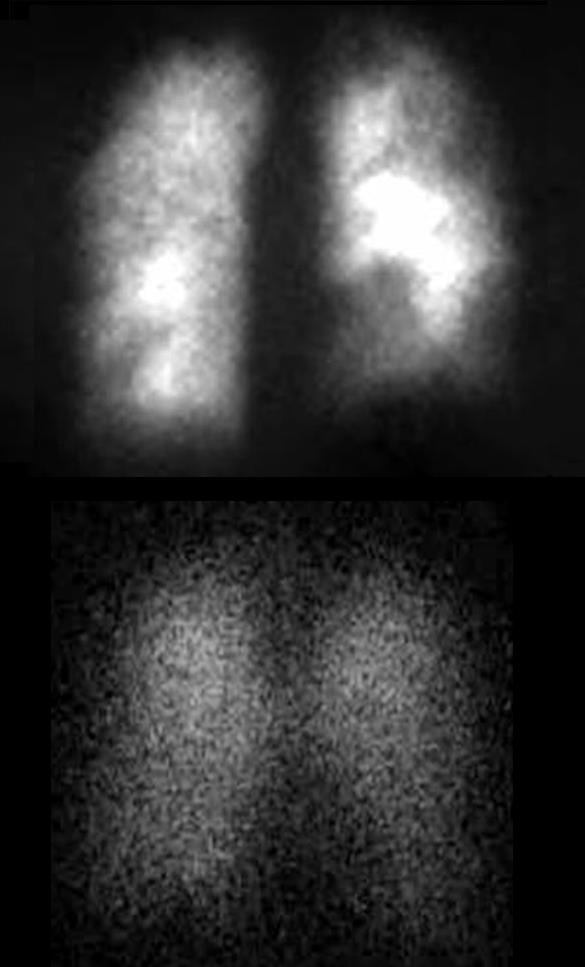
28-year-old female on OCP with leg swelling, chest pain and dyspnea.
Previously performed CXR was normal. Perfusion scan (above) shows multiple bilateral perfusion defects which are not matched on the ventilation scan (below). These findings are consistent with multiple pulmonary emboli
Ashley Davidoff MD TheCommonVein.net 274Lu 11006c02
- A Ventilation-Perfusion (V/Q) scan is a
- diagnostic imaging test used to evaluate the
- blood blow and
- ventilation – air flow.
- It is commonly used for the diagnosis of
- pulmonary embolism,
The V/Q scan involves two components:
- Ventilation
- evaluates the airflow
- patient inhales a radioactive gas or aerosol, and a
- gamma camera detects the
- distribution of this radioactive material in the lungs.
- helps assess the distribution or lack of distribution of
- air in the lungs.
- evaluates the airflow
- Perfusion (Q):
- evaluates the blood flow in the lungs.
- radioactive material is injected into the bloodstream,
- the camera captures images of the blood flow in the lungs.
- helps assess the
- distribution or
- lack of distribution of
- blood in the lungs
- evaluates the blood flow in the lungs.
- The comparison of the ventilation and perfusion images
- allows the identification of matched or mismatched perfusion and ventilation
- mismatched areas
- suggest the presence of a pulmonary embolism or other lung diseases.
- Certainly, here’s an overview of Ventilation-Perfusion (V/Q) scans with information on indications, contraindications, advantages, disadvantages, aim, method, patient preparation, equipment, technique, results, and potential complications:Indications:
- Pulmonary embolism:
- Assessment of lung function: To evaluate ventilation and perfusion in patients with lung diseases such as chronic obstructive pulmonary disease (COPD).
- Preoperative evaluation: Especially in cases where lung surgery is planned.
- Assessment of lung transplant viability.
- Evaluation of pulmonary vascular diseases.
Contraindications:
- Pregnancy: Radiation exposure may pose risks to the developing fetus.
- Known allergies: For patients allergic to the radioactive materials used.
- Severe respiratory distress: In some cases, the patient’s condition may make it challenging to perform the test safely.
Advantages:
- Sensitivity: Can detect pulmonary embolism and other lung abnormalities.
- Non-invasive:
- Functional information: Provides information on both ventilation and perfusion in the lungs.
Disadvantages:
- Exposure to radiation: Though the radiation levels are typically low,
- Limited anatomical detail: Compared to other imaging modalities like CT scans.
- Potential for false positives or negatives: Interpretation may be influenced by various factors.
Aim: To assess and diagnose pulmonary embolism, evaluate lung function, and identify abnormalities in ventilation and perfusion.
Method:
- Ventilation (V): Patient inhales a radioactive gas or aerosol, and a gamma camera captures images of the distribution of the inhaled substance in the lungs.
- Perfusion (Q): Patient receives an injection of a radioactive substance into the bloodstream, and the gamma camera captures images of the blood flow in the lungs.
Patient Preparation:
- No special preparation: Usually, patients can eat and drink normally before the test.
- Avoidance of certain medications: Some medications may need to be stopped temporarily, depending on the specific protocol.
Equipment: Gamma cameras, radioactive tracers (commonly technetium-99m), inhalation devices for ventilation component.
Technique:
- Ventilation (V): Patient inhales the radioactive substance.
- Perfusion (Q): Patient receives an injection of the radioactive substance.
Results: Comparison of ventilation and perfusion images to identify areas of mismatch, helping to diagnose pulmonary embolism or other lung conditions.
Complications:
- Allergic reactions: Rare, but possible reactions to the radioactive substances.
- Radiation exposure: Minimal, but considerations for pregnant women.
- allows the identification of matched or mismatched perfusion and ventilation
V/Q scans are particularly useful when other imaging modalities, such as CT scans, are not feasible or contraindicated. However, advancements in imaging technology, including the widespread use of computed tomography pulmonary angiography (CTPA), have reduced the frequency of V/Q scans in the diagnosis of pulmonary embolism. The choice of imaging modality depends on the specific clinical situation and the patient’s individual circumstances.
Prior to V/Q Scan CXR is Needed to Ensure there are No Other Reasons that Could Account for Perfusion or Ventilation Abnormalities
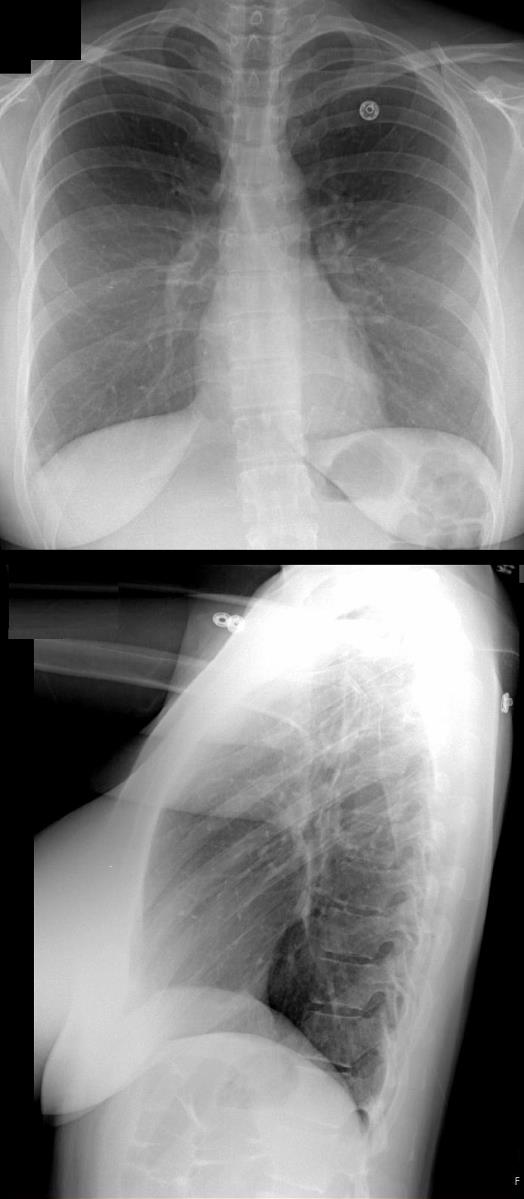
28-year-old female on OCP with leg swelling, chest pain and dyspnea.
CXR in frontal and lateral projection is normal
Ashley Davidoff MD TheCommonVein.net 274Lu 110060ac01
The Procedure
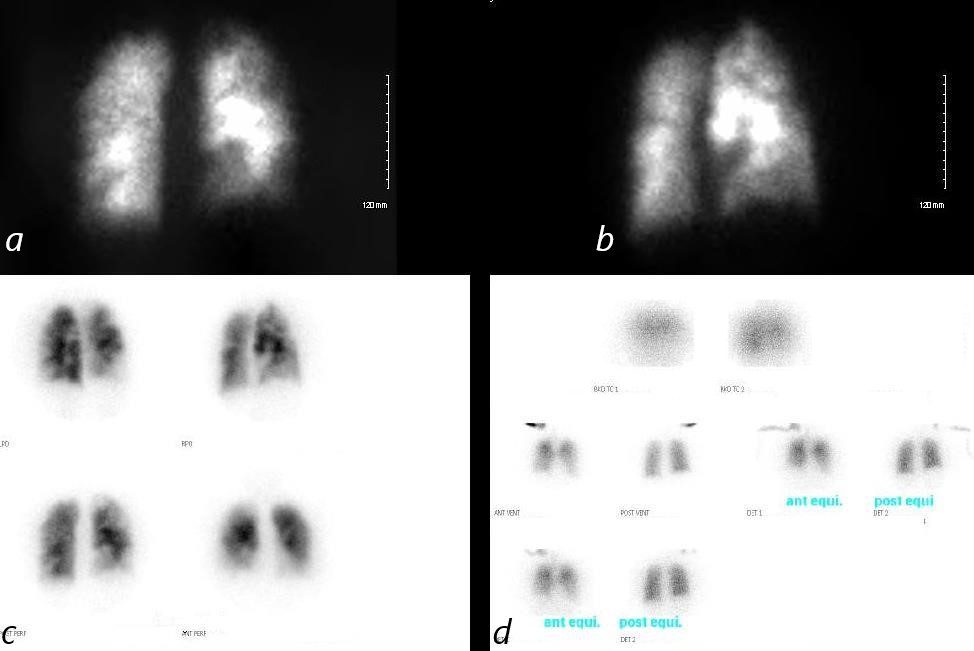
28-year-old female on OCP with leg swelling, chest pain and dyspnea.
Previously performed CXR was normal. DVT study was positive. Perfusion scan (a,b,c) shows multiple bilateral perfusion defects which are not matched on the ventilation scan (d). These findings are consistent with multiple pulmonary emboli
Ashley Davidoff MD TheCommonVein.net 274Lu 110060b01L
The Report
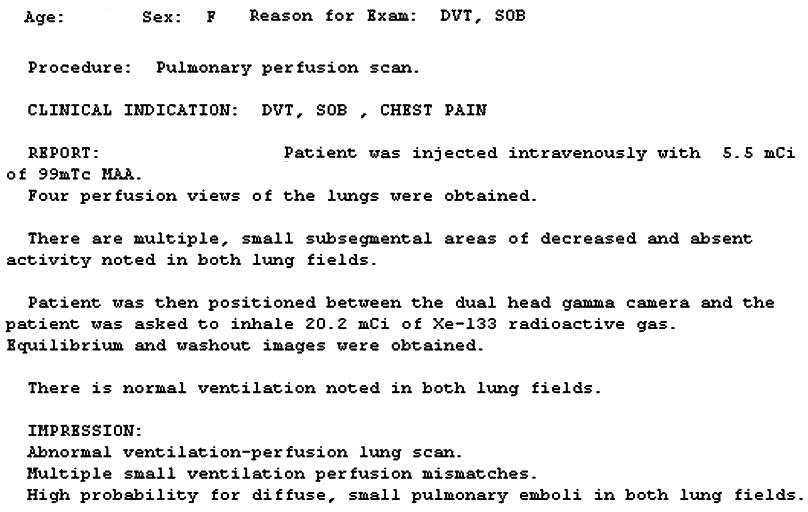
28-year-old female on OCP with leg swelling, chest pain and dyspnea.
Previously performed CXR was normal.
Ashley Davidoff MD TheCommonVein.net 274Lu 11006b02
Correlation with CTPA
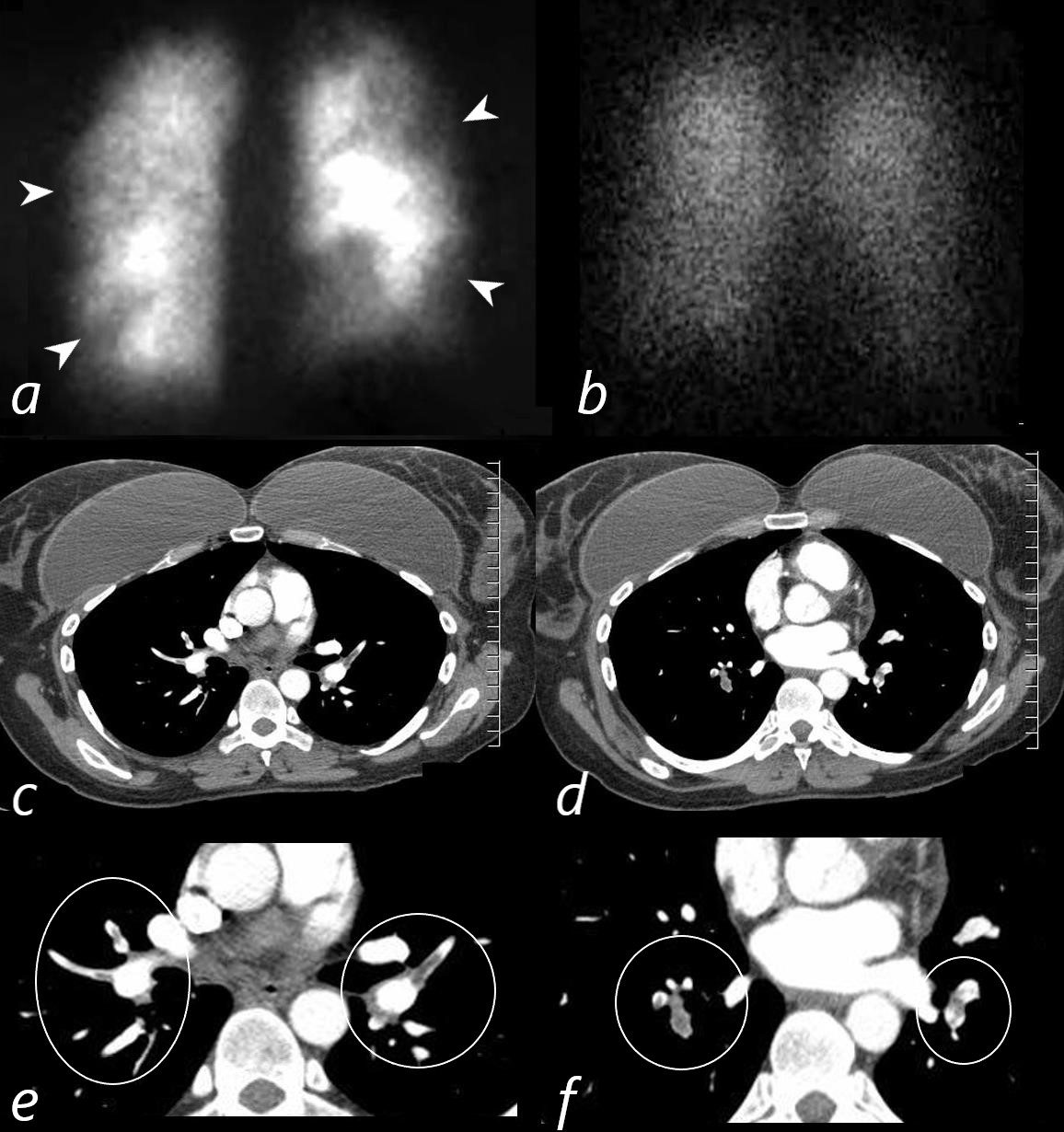
28-year-old female on OCP with leg swelling, chest pain and dyspnea.
Previously performed CXR was normal. Perfusion scan (a) shows multiple bilateral perfusion defects (white arrowheads) which are not matched on the normal ventilation scan (b). These findings are consistent with multiple pulmonary emboli. CT scan through the upper and mid portions of the chest (c,d) confirm the presence of multiple occlusive and non-occlusive pulmonary emboli magnified and ringed (e,f)
Ashley Davidoff MD TheCommonVein.net 274Lu 11006c03L
